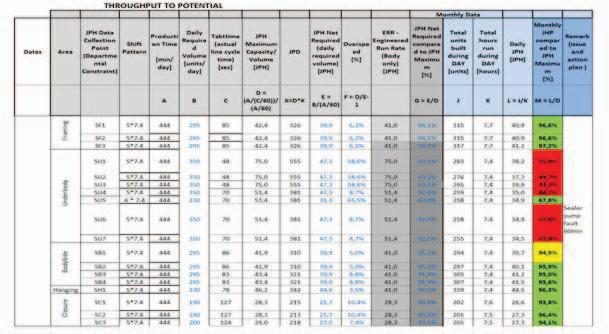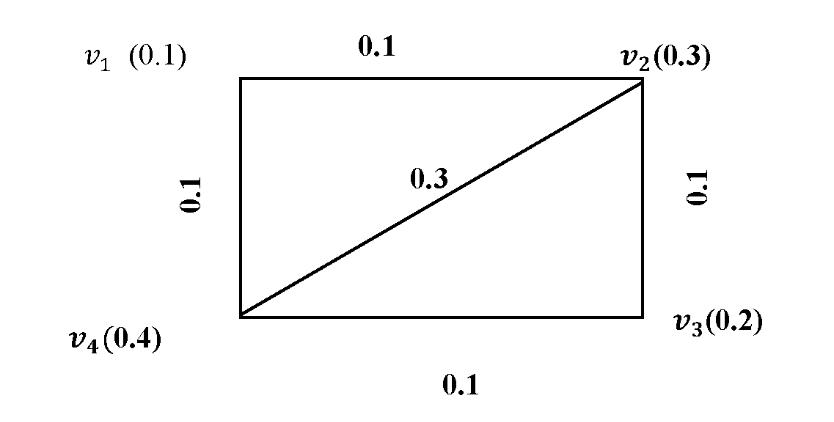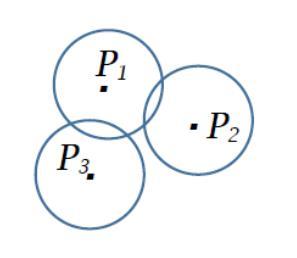
13 minute read
Neutrosophic Modeling of Investment Architectures
Emilia Calefariu, Mircea Boșcoianu, Florentin Smarandache, Traian Alexandru Buda (2014). Neutrosophic Modeling of Investment Architectures. Applied Mechanics and Materials 657: 10111015; DOI: 10.4028/www.scientific.net/AMM.657.1011
Advertisement
Abstract. Despite numerous attempts to refocus traditional bivalent logic, usually, logic is tributary by keeping fixed limits for truth or false. An alternative answer to this need is the system of Neutrosophy, and its connected logic, Neutrosophic Logic, presented in the work of the authors W. B. Vasantha Kandasamy and Florentin Smarandache. Neutrosophy is a new branch of philosophy that studies the origin, nature and scope of neutralities, as well as their interactions with different ideational spectra. We are surrounded by indeterminacy, which can be pointed in any situation that, from one point of view can be considered true, and from another point of view can be considered false. In Neutrosophic logic, every statement includes a percentage of truth (T), includes a percentage of indeterminacy (I) and a percentage of falsity (F). The major novelty of the work is that investment process is analyzed through the method of Neutrosophic logic, taking into account investment parameters such as: economic return on investment, recovery duration on investment, the resources involved (financial, human and time), the production capacity, the period of execution, the work volume, the market demand, the training of the personnel, etc. Thus, this paper consists of the analysis of interdependence and indeterminacy of these parameters. The model will be calibrated by conducting case studies, with real parameters of input to be analyzed and known output data, which will be used for the research of a present investment process.
Keywords: neutrosophic logic, investment, interdeterminancy, cognitive map.
Introduction
Evaluating quantitative and qualitative aspects of the economic process is an ensemble of instruments and methods which allow a better knowledge and assessment about the financial position and organizational performance. Due to an acceleration of the economic globalization in the last few years, the existing logics with its economic analysis and financial diagnosis have now an alternative to give solutions for elaborating strategies for improving the external relation of the organization (demand, offer, competition, resources), and also the internal strategy of the organization (production, inputs, commercial activity, organizational strategy, decisional system, organizational structure and informational system). This different method is the Neutrosophic Logic, as an alternative to the existing logic, which consists of a mathematical model of uncertainty, vagueness, ambiguity, imprecision, undefined, unknown, incompleteness, inconsistency, redundancy, contradiction. In particular, the method solves problems regarding taking decisions about project selection, preparing negotiations for merging of two or more companies, appraisal of the company's position in the group, planning of policies and strategies for long-term development, all of these concerning also financial analysis, strategic analysis and risk analysis.
Reliability, accuracy and availability of data can be a problem for existing organizations or organizations that are moving to new business industry, in fields where innovation is applied, and the lack of information, database and experience is evident. In Neutrosophic logic this is called indeterminacy (I). The importance of the decision making needs to be highlighted here, and the expert’s opinion is of great importance for the best result to be obtained. This is one of the most important advantages of this method’s usage, the Fuzzy Neutrosophic Matrices method. This method allows several experts opinion to be used in order to determine the best solution, or option for the problem or innovation that needs to be fixed or implemented.
About the Fuzzy Neutrosophic Matrices Method
A fuzzy neutrosophic matrix can be defined as a matrix which consist in elements from [0,1] and [0,I]. The matrix can consist in elements included in Z ∪ I or R ∪ I or Q ∪ I or C ∪ I or Zn ∪ I or C(Zn) ∪ I. The indeterminate I has its fundamental application in I2 = I. If the indetermination I is not an element of the matrix, than the matrix is not considered a neutrosophic one. This matrix includes both the fuzzy matrix and the real matrix. Table 1. The causality that can connect two nodes This method represents a generalization of Aristotle classical logic, Value Node N1 Consequence Node N2 Lukasiewicz’s three-valued logic and 0 N1 – no effect N2 – no effect Zadeh’s fuzzy logic [1]. It allows the 1 performance of revealing studies about the dynamic of the investigated events, events which are not observable by applying bivalent logics or Fuzzy Logic, nor statistical studies, the difference being the existence of the indeterminate I. Neutrosophic Logic is an alternative to the existing logic, and consists of a mathematical model of uncertainty, vagueness, ambiguity, imprecision, undefined, unknown, incompleteness, inconsistency, redundancy, contradiction [2]. Even so, logics work with multiple levels of truth, without allowing the presence of other realities, or states of reality. This is why, in a world that reached saturation regarding traditional logic, scientists have aimed a different system, which could encapsulate a representation of the real world.
The expert’s opinion is very important in evaluating the values of the neutrosiphics matrix elements. If he/she considers finding even the smallest degree of indeterminacy, than he/she will choose I to the real values. If the expert wishes to disregard the small degrees of indeterminacy, than the real values will be chosen to the detriment of the indeterminate I.
The Neutrosophic Matrices method can be transformed in Neutrosophic Cognitive Maps, which are neutrosophic directed graphs that can transpose concepts like processes, events, economic policies, as nodes, and causalities and indeterminate as edges [3]. In this directed graph, which is associated with values for each relation, we can see a representation of the causal relationship between concepts. The nodes of the graph are noted with Ni, and they represent the neutrosophic vector from the neutrosophic vector space V. Each node can have values from the set {-1, 0, 1, I} where the value 1 means that the node is in the on state, I implies that the node is in the indeterminate state at that time, and the value 0 if the node is in the of state, that it has no influence on that node. The causality, as can be given by an expert in the field, which can connect two nodes, is detailed in Tab. 1.
After the construction of the directed neutrosophic graph, the matrix associated with it is written, resulting thereby the adjacency matrix of the neutrosophic cognitive map.
The next step is to threshold and update the state vector Y, which is known as resultant vector. „Updating means keeping the on state of the given vector to remain in the on state. The thresholding
N1 – ↑ ⇒ N2 – ↑ or
N1 – ↓ ⇒ N2 – ↓ -1
N1 – ↑ ⇒ N2 – ↓ or
N1 – ↓ ⇒ N2 – ↑ I N1 –indeterminate ⇒ N2-indeterminate
is, in the resultant every negative value is made as 0 and positive value is made as 1 and positive coefficient indeterminate value is made as I. The combination of 1 + I is made into I or 1 according to the wishes of the expert depending on the problem.“ [2] The result is interpreted by the specialists in order to improve or solve the problem under discussion.
Investments
Investments represent capital lock-ups. The investors decide to restrain themselves from present consumption, in order to create the possibility of obtaining future benefits. A production system consists in all the natural components and artificial ones like raw materials, energy, tools, devices, technological equipment, buildings labor and relations of production, concepts, work organization and management of manufacturing, aiming to obtain products and services that could be sold [4].
These components must be organized so as to fulfill the main objective of any economic activity: obtaining profit and raising the value of the company. The value of the company is given by the net asset value reflected in the balance sheet, and it can be determined as the net difference between the total assets of the company (fixed and current assets) and the liabilities of the company at a time.
The decision to invest in one company can be difficult and risk involving in the same time. When facing several potential investment possibilities, the analysis of all the involved elements must be a very rigorous one. In order to maximize the value of a portfolio, it is advisable to consult the opinion of many specialists, to select the most opportune balance and mix of projects. The analysis must take into consideration the limited availability of the cash budget, the scarce of the resources, the plough back of the profit, the short-term and long-term development strategy of the organization, the organizational strategies, but also uncertainty and strategic importance.
Table 2. Atlantic Global (2007) categorized projects based on the competitive advantage [5]
Competitive advantage Tactical Strategic Administrative
Innovation Explication Deliver competitive advantage today Deliver competitive advantage in the future Deliver concurrently promised service levels and supporting existing strategic projects Smaller and experimental projects, delivering possible competitive advantage tomorrow
Future vision Contingent upon strategic and innovation projects
The investment can be developed considering the managerial dimension, which can validate both the idea and the financial implementation, the organizational dimension, through reorganization and assuming the risk, the operational dimension regarding project functioning and the strategic dimension by taking in consideration the permanent adaptation on the continuing changing market.
Application
We now study the investment process and analyze it through the method of Neutrosophic logic, taking into account the investment parameters as discussed earlier, and customizing in the situation of a company that exists on the market and is interested in finding the experts opinion regarding reinvestment of profit. The method allows specialists, more freedom of intuition in order to express not only positive, negative and without impact, but also, the indeterminacy of the impact.
We take the following nodes to be related with the company that considers profit reinvestment: N1 – Economic return on investment N2 – Recovery duration on investment N3 – The resources involved (financial, human and time), N4 – The production capacity N5 – The period of execution N6 – The work volume N7 – The market demand and N8 – The training of the personnel
These eight nodes are taken as the domain nodes, as they are the most important aspects for the company’s management, when making an investment.
The following four nodes are the range space related with the investment: L1 – Good investment; L2 – Average investment; L3 – Bad investment; L4 – Risk involving investment
After consulting a number of five specialists, and they evaluated each factors influence over the investment, the following directed neutrosophic graph with the same set of domain space nodes and range space nodes resulted the graph from Fig. 1. The neutrosophic connection matrix associated with this neutrosophic directed graph is as it is presented in Fig. 1.
Each specialist evaluated each connection between a domain node and a range space related node with a value, according to his opinion. Equal importance is given to each expert’s opinion. The value could consist in elements from [0,1] and [0,I]. After each specialist evaluated all aspects taken into consideration, the arithmetic mean of all five specialists conducted to the neutrosophic connection matrix associated with this neutrosophic directed graph. The straight line arrow indicates that the specialists considered the relation between the nodes as a measurable one, assigning values within the range [0,1], and the dotted arrow indicates that the specialists considered the influence as an indeterminate one (I), assigning each connection values within the range [0,I].
The investor is interested in studying the impact of the state vector A1 = ( 1 0 0 0 0 0 0 0 ) that is the economic return on the investment which is in the on state and all the other nodes are in the off state. When taking the final decision, this is considered to be the most significant factor.
To find the effect of A1 on the neutrosophic dynamical system of investments N(E), we must perform the operation of multiplication between the vector A1 and the neutrosophic matrix:
A1N(E) = ( 0.6 0.4 0.1 0.2I ) = B1. (1)
N(E)T is the transposed matrix N(E). The next step is to update and threshold ( ), by making every negative value as 0 and positive value as 1 and positive coefficient indeterminate value as I:
B1(N(E))T (1 I I I 0 1 1 1) = A2 . (3)
A2N(E) = (3+I 2.4+0.9I 0.7+1.2I 3.1I). (4) (1 1 I I) = B2. (5)
B2N(E)T = (1+0.3I 0.6+1.2I 1+0.8I 0.3+1.6I 1 0.13+0.2I 1.8+0.3I 1.3+0.6I). (6) (1 I I I 0 1 1 1) = A2. (7)
The operation of multiplication was performed until a constant result was obtained, in this case four times, applying the same method each time we updated and thresholded the vector.
These operations lead to the hidden pattern of the system, as a fixed point given by {(1 I I I 0 1 1 1) (1 1 I I)}. Since the uncertainty and indeterminacy is involved in these concepts, the usage of a neutrosophic relational map is justified.
The five expert’s opinion has conducted to this result: - the economic return on investment, the work volume, the market demand and the training of the personnel must be of great importance for the investor, and be paid an increased attention, when the aim is obtaining a good investment; - the period of execution is on the other hand of smaller importance to the investment, as the other investments evaluation parameters mentioned before; - the recovery duration on investment, the resources involved (financial, human and time) and the production capacity are indeterminate, as this parameters are depending on the investors’ interest and willingness to reinvest it’s profit; - the result obtained is interdependent on this evaluation parameters. A bad investment or a risk full one is an indetermination. On the other hand a good or an average investment is based on the fulfillment of the parameters first discussed.
Conclusions
The major novelty of the work is the adaptability of the model and the flexibility of it due to the results that the method can provide. This model can be applied in various spectrums of economic decisions, and can be an alternative or a second opinion for the financial analysis that every company depends on. Another novelty of the work is that investment process is analyzed through the method of Neutrosophic logic, taking into account investment parameters such as: economic return on investment, recovery duration on investment, the resources involved (financial, human and time), the production capacity, the period of execution, the work volume, the market demand, the training of the personnel, etc. Thus, this paper consists of the analysis of interdependence and indeterminacy of these parameters. The model was calibrated by conducting case studies, with real parameters that were used in an investment process.
Future work is various in this method, especially because it is a new method with many application possibilities that have not been used before.
Acknowledgement
This paper is supported by the Sectoral Operational Programme Human Resources Development (SOP HRD), ID134378 financed from the European Social Fund and by the Romanian Government.
References
[1] C. Ashbacher, Introduction to Neutrosophic logic, American Research Press, 2002. [2] W. B. V. Kandasamy, F. Smarandache, Fuzzy Neutrosophic Models for Social Scientists, Educational Publisher Inc., Ohio, 2013. [3] W. B. V. Kandasamy, F. Smarandache, Fuzzy Cognitive Maps and Neutrosophic Cognitive Maps, Xiquan, Phoenix, 2003. [4] G. Calefariu, Production systems - theory and applications (in Romanian), Lux Libris, Brasov, 2011. [5] M.C. Le, V.T. Nguyen, Strategy for Project Portfolio Selection in Private Corporations in Vietnam, UMEA School of Business, Sweden, 2007.







